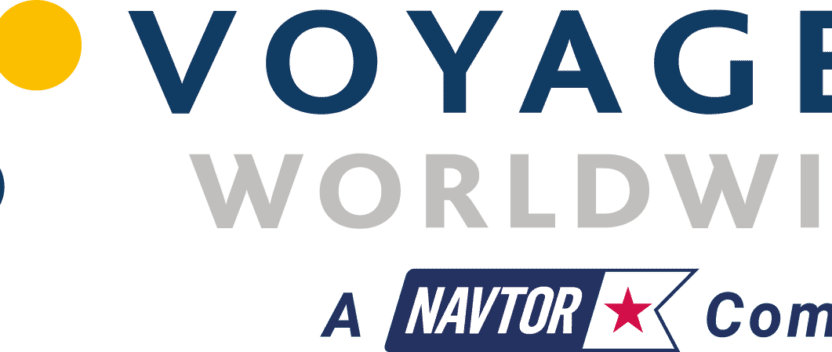The space race continues

We’ve been keeping an eye on the news agenda during what has been a busy start to the year and rounding up major stories that made headlines this month. As the maritime communications revolution gathers pace, there has been activity under the sea too. Owners have continued to grapple with environmental concerns and the changing nature of fuel sources. Shipping in polar waters is beginning to heat up, for operators and regulators while there are new funds and new resources for e-Navigation and ECDIS users.
It was a busy year-end for maritime communications giant Inmarsat, which first announced a surprise deal to acquire service provider Globe Wireless then announced that it had at last struck an agreement with its largest customer Astrium which will see the service provider market Inmarsat’s new Global Xpress services.
Inmarsat surprised the market by paying $45m for Globe Wireless, which represents another move into territory it traditionally left to its partners. Globe Wireless brings Inmarsat significant value in terms of customer base and software solutions which could be fitted into Inmarsat’s Global Xpress Service Enablement Platform.
As The DigitalShip reported, the deal with Astrium ‘is the conclusion of long-running negotiations between the pair, and takes the form of what the companies describe as “a strategic distribution partnership agreement” which will see Global Xpress made available to Astrium Services’ partner and customer base’.
The deal is highly significant given Astrium’s clout with maritime end users but the on/off nature of the negotiations (going back to the middle of last year) will be a relief to both parties, since Astrium is crucial to the successful roll out of Global Xpress and vice versa.
ICS urges IMO to begin carbon monitoring
The International Chamber of Shipping has urged the International Maritime Organization to develop global regulation on CO2 monitoring before the European Union can devise and adopt unilateral and regional regulations. The EU has long threatened to develop regional rules if the IMO failed to act on climate change and last year began the MRV monitoring programme for ships calling at EU ports, having concluded that it could not establish a fully-fledged carbon trading scheme.
The IMO has repeatedly debated market-based mechanisms to offset the carbon produced by ships but political disagreement over whether the IMO has the power to impose carbon controls mean the work has made no progress beyond proposals.
ICS secretary general Peter Hinchliffe said “the recent impasse at IMO on making further progress is due to difficulties unconnected with shipping and imported from the United Nations Framework Convention on Climate Change”.
Port Technology reported that the ICS has suggested that IMO Member States should focus on developing regulations for the mandatory reporting of fuel consumption and CO2 emissions by ships on international voyages – essentially an expansion of the EU scheme, and deferring further discussions on energy efficiency that might result in a market-based mechanism.
UK territorial waters surveyed
A two-year nautical charting survey of UK waters has been completed for the UK Maritime and Coastguard Agency, E&P magazine reported. The project, which was finished by Fugro EMU at the end of 2013 saw over 15 billion bathymetric soundings taken as part of the 2011 to 2013 Maritime Coastguard Agency (MCA) Civil Hydrography Programme.
Working in UK coastal waters between the 2 and 40 metre contours, Fugro EMU surveyed over 3,000km2 of seabed off the English, Welsh, Scottish and Northern Irish coastlines, using a fleet of eight dedicated survey vessels working to International Hydrographic Organisation Order 1a standard.
Many of the areas covered were last surveyed by lead line in the 19th Century and several of them, particularly in Scottish coastal waters, have never been surveyed before. The survey resulted in the first collection of high-resolution seabed data, including the discovery of several previously uncharted wrecks and the re-classification of water depths over some existing wrecks.
Data presented on Admiralty charts are scaled down to a level which provides sufficient information for the safe navigation of vessels at sea but full density data sets are publicly available via both the MCA and the UKHO.
Managing the risks of ECDIS with the Nautical Institute
The Nautical Institute has released the second edition of ‘From Paper Charts to ECDIS’ which offers practical guidance to the shipping industry on equipment, training and operational practices. The DigitalShip reported the new edition draws on the experience amassed by members of the NI’s Sea Going Correspondence Group (SGCG) during the four years since publication of the first edition.
The book’s author Captain Harry Gale said the new edition provides advice and practical assistance to manage the risks posed by the transition from navigating by paper charts to navigating by ECDIS. “As well as supporting its members through this fundamental change, The Nautical Institute wants to ensure that the best practice encapsulated in this second edition, incorporating experience at sea, reaches as wide an audience as possible throughout the industry.”
‘From Paper Charts to ECDIS is available from The Nautical Institute at £20.
Korea invests in e-Navigation
The government of South Korea has unveiled plans to invest heavily in e-Navigation, with approximately $200 million earmarked for related projects under the new strategy, Hellenic Shipping News reports.
The initiative was announced by the country’s Ministry of Ocean and Fisheries, which said that Korea’s e-Navigation strategy will aim to comply with international maritime safety and security standards in commercial shipping but will also include services specifically developed for the Korean coastal environment, including measures covering fishing boats and small-sized ships.
To support the project, the South Korean government has pledged approximately $200 million between 2015 and 2020 to support the initiative which aims to build on Korea’s country’s “world-class expertise in shipbuilding, and marine shipping and information and communications technology that are considered essential to develop e-Navigation.”
The e-Navigation project was proposed to the IMO NAV sub-committee in September and the government plans to sign an MOU with Sweden and Denmark to develop a demonstration project.
The Korean government added that it is planning to propose the establishment of an international body for global collaboration on e-Navigational operation, to be based in Korea.
Guide to the Northern Sea Route published, Polar Code discussed.
Classification Society ABS has issued an; advisory to help shipowners to expedite the process of applying for permits and managing a transit of the Northern Sea Route, Lloyd’s List reports.
2013 was the first that the Russian authorities publicly pushed the potential of the Northern Sea Route as a route between parts of northern Europe and the Far East, publishing data and making the application process more transparent.
ABS harsh environment programme manager Han Yu told Lloyd’s List via email that the purpose of its advisory was to answer growing industry demand for technical and regulatory information with regard to shipping through the NSR, not to promote the NSR’s usage.
Russian ships still make up the bulk transit figures. Of 71 recorded transits only some 25 were for non-Russian-flag ships and many loaded Russian cargoes in the country’s ports.
Lloyd’s List also reported on the recent session of the IMO’s Ship Design and Construction (DE) sub-committee meeting at the IMO where the body’s plans for regulation of polar shipping were discussed. Secretary General Koji Sekimizu told the meeting’s opening session ‘in no uncertain terms’ that he hoped to see the draft code finalised by year-end, becoming mandatory from 2016.
The development of a set of guidelines widely accepted by industry, has divided nations and industry with agreement on development of a mandatory code from the guidelines a political challenge, with disagreements on technical issues and apparently minor procedural points.
Fuel choices growing
SHIPOWNERS will have access in future to a growing list of potential fuels, according to a new report by European class society the DNV GL Group.
Deepsea and shortsea trades consume an estimated 330m tonnes of fuel annually, most of it residual fuel oils with a high sulphur content. But new IMO rules on the maximum sulphur content in fuel both in coastal emission control areas and globally from as soon as 2015 are driving the diversification of fuel sources.
Demand for fuel will grow as world trade recovers and shipping demand increases, the DNV GL Alternative Fuels for Shipping report said, with fuel types becoming more diverse as ship operations are affected by regulations and costs. Though LNG appears to a popular choice in the short term, as much as 20% of shipping could adopt hybrid propulsion solutions, featuring batteries or other energy storage technologies.
The newly-merged class society suggests that while shipowners will continue their battle to curb fuel bills and to meet the challenges of limits on CO2 and other emissions, the solutions available to them will increase, with regional and other influences such as security of supply and production volumes driving adoption.
E-Navigation Underway event gets a US offshoot
The e-Navigation conference has become established in recent years as a talking shop and test bed for projects and debate. This year’s event took place as usual on Pearl Seaways, sailing between Denmark and Norway.
Now the conference gets to pack its bags and perhaps some sunglasses too as an inaugural regional version will be held at the California Maritime Academy, Vallejo on April 3-4 2014. Hosted and managed by Cal Maritime in close co-operation with IALA and the Danish Maritime Authority the conference aims to increase awareness of the maritime information environment that e-Navigation will create.
The organisers say that along with encouraging greater understanding the conference will ‘stimulate thought about e-Navigation’s application to North American needs and promote the identification of specific actions to implement e-Navigation’.
More information can be obtained from the organisers.
Something for small boys of all ages
No sooner had the Maersk Line Triple E containership Maersk McKinney Moller made its maiden voyage than the company’s Danish compatriot announced the launch of a LEGO model of the boxship behemoth.
And as gCaptain reported, the model, originally launched late last year, has proved so popular, it is currently sold out on the LEGO website.
Comprising more than 1,500 pieces the model features rotating gold-coloured propeller blades, brick-built twin eight-cylinder engines, a viewing window into the engine compartment, adjustable rudders, detachable lifeboats, removable containers, rotating crane arms, even the special ‘good luck’ coin Maersk places under the forward mast of every ship.
While waiting for the model to come back into stock, which the LEGO website estimates as 5 March, you can watch the slightly geeky video here.


